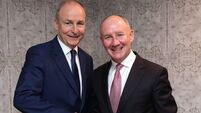When the mind doesn’t fit the body and your daughter becomes a son

For some time, Kirsty Donohue’s eldest had a sketch hanging up on the wall. Kirsty didn’t take much notice of it thinking it was some guy in a band. The name Dylan was printed underneath.
First year in secondary school hadn’t been easy for the 13-year-old who had become increasingly withdrawn. Then an unexpected note came home from school one day requesting that Kirsty and her husband, Dara make an appointment to see them.
Kirsty didn’t have an idea what it could be about: that night, she picked up her child’s phone and flicked through the messages. Within seconds, she happened upon texts to his friends where he mentioned his self harming and his belief he was transgender.
The mother of three from Lucan in County Dublin was blindsided.
Shocked, she initially dismissed the idea as ‘teenage hormones’ or just first-year uncertainty. It couldn’t be true, she thought.
It took about 48 hours for Kirsty and her husband, Dara to come to the painful conclusion that whether they had seen this coming or not was irrelevant, “this is where we’re at”.
“ I thought ok, I’ll have to either go to a GP or do some Google research. I opened myself to it. I hadn’t a clue before this. I thought there were two genders and you were one or the other. It’s a common misconception,” she says breezily.
From April 2015to April last year, 27 Irish children were referred to Our Lady’s Hospital Crumlin where the UK’s Tavistock and Portman NHS Trust gender identity service (GIS) run a satellite clinic.
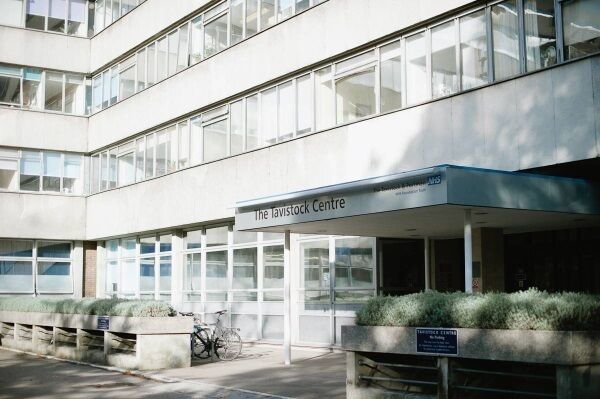
This is a more than a three fold increase on the eight referred in 2014/2015 and a ninefold increase on the three that attended in 2012/2013.
Five years ago, the support group, Transgender Equality Network Ireland (TENI) had 14 parents, an aunt and one very empathetic neighbour on its family database.
“Now we have 200 families on our database, including grandparents, siblings, aunts,” says Vanessa Lacey, its health and education manager.
In this country, it wasn’t really until the same sex marriage referendum campaign that the term LGBT (lesbian, gay, bisexual and transgender) really moved into the mainstream.
Up to 2015, you were male or female.
Simple as.
But as conversations around gender gained currency, the ‘t’ of transgender became increasingly visible.
And then of course, you can’t ignore the global gasp that was the emergence of former US Olympian and erstwhile Kardashian stepdad, Bruce Jenner as Caitlyn Jenner.
Last November it emerged that seven Irish teenage children officially changed their gender in Ireland over the past year by court order.
While the British tabloids have sold many newspapers with front splashes about 14- year-old boys returning to school in September as girls, there has been less outright media hostility here.
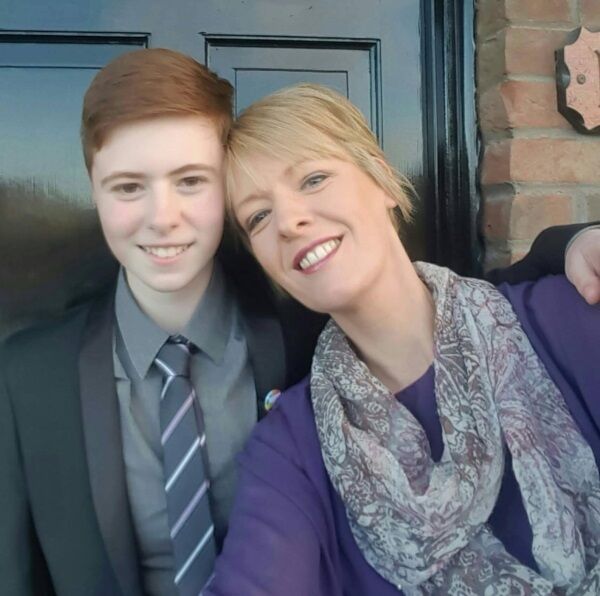
Small numbers of both primary and secondary school pupils have been quietly ‘socially’ transitioning from one sex to another here and experts say Irish school management — with the Catholic Joint Managerial Body (JMB) singled out for particular praise — have been fantastic at supporting the kids.
TENI helps as a support service when a family want their child to go through a social non-medical transition to another sex, namely when they want to change their “name, appearance, use of toilets and want the correct pronoun to be used” says Vanessa Lacey.
TENI liaise with the school secretariat and give a presentation to management and teachers on how best to handle the change.
“Generally it’s very positive,” she says.
“I have met a host of clerics sitting on school boards and I never thought I’d say it, but once they understand the barriers and it’s explained, they get it”.
In schools TENI work with the HSE, family and school to ensure the child has “wraparound support”.
It’s all about support, says Kirsty Donohue. After their initial shock, Kirsty and Dara sat down with their child and he talked.
Her child with “the beautiful long hair” who had been born natal female told her he was a trans boy.
He couldn’t lie anymore. He wanted to drop the mask.
The pressure of his secret had become increasingly hard to carry and he’d started self harming: cutting seemed to give him release. His friends had found out and told a school tutor, hence the note home.
“I don’t think he was ready to tell us but I am ever grateful that his friends did what they did,” Kirsty said.
That was March 2015 and within weeks, the “beautiful long hair” had gone and the family had donated two pony tails to the Rapunzel Foundation.
“Doing this allowed him to cut his hair short without fully coming out in school. It was my idea. I was protecting him as donating his hair gave him an explanation,” said Kirsty.
The family agreed that he would transition socially over the summer and return to his mixed school in September as a boy. His school couldn’t have been more supportive but it wasn’t all easy .
For weeks, Kirsty couldn’t voice her child’s new name.
Attempting to get him up for school, she would wander into his bedroom and rub at his leg. She didn’t open the door and holler at him anymore.
“I called him ‘my eldest’ to others. I avoided his name. It was really really difficult. When I eventually did say Dylan, I saw his face light up,” she says.
Kirsty is blown away at the maturity of her son.
“He’s so brave. At the beginning, we were so wary of labelling. But then we realised that he had known for ages that his mind didn’t fit with his body, it must have been great for him to put a name on it, to say ‘that’s who I am’. Once he told us, he became so much happier. He can stand up for himself now. In primary school, he couldn’t,” she said.
TENI has said that when a transgender child comes out, it can be like a ‘grenade’ is thrown into a family.
Nothing is ever the same.
The Donohues have learnt so much in the past year and a half. Their family doctor too. She had never had an openly transgender patient before.
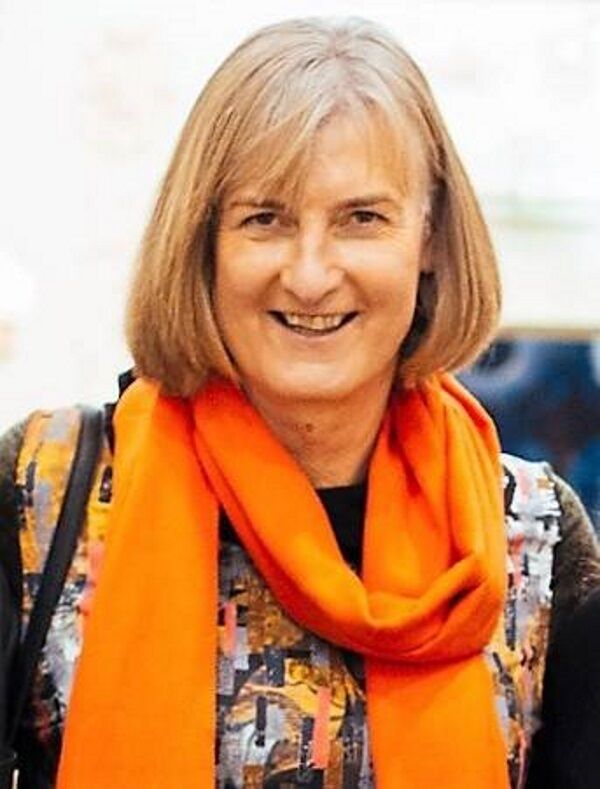
Vanessa Lacey of TENI says one of the challenges facing Irish transgender children is “getting access to healthcare services”.
“The biggest problem is access but there isn’t a proper system either. No guidelines, no protocol, it’s ad hoc and this adds to the distress. From what we see, only about half of Child Adolescent and Mental Health Services (CAMHS) work with trans’ children. If there isn’t the threat of suicide, they won’t see them as suicidal young people are prioritised. In this case the only solution is private care. But what if a parent can’t afford to? ” she asks.
Gender dysphoria is a feeling one’s emotional and psychological identity as male or female is opposite to one’s biological sex, according to St Patrick’s Mental Health Services.
Any person who believes they are transgender must get a GD diagnosis before they can begin any kind of treatment such as puberty blockers or cross sex hormones.
“We’ve seen parents borrowing from credit unions, spending their son’s college fund to access healthcare as their child is in such pain due to gender dysphoria,” says Vanessa.
Suicidal thoughts, self harming, depression and anxiety torment most transgender children say TENI. Research in 2013 revealed that 80% of Irish trans people had contemplated suicide and 40% had attempted it.
“You can face waiting lists of at least six months for first appointments to see consultant psychiatrists, psychologists and hormone experts here, and all the time you are physically developing further into a body you despise ,” she says.
Tavi’ professionals only come to Crumlin from the UK for two days every three months. To get a GD diagnosis, under UK protocols you must have at least six assessment meetings. This means that in Ireland after your initial wait to access services, you could spend another 18 months undergoing assessment.
Because of his self harming, the Donohues’ GP referred Dylan to CAMHS.
Gender dysphoria of itself isn’t a mental health problem but very many transgender children have complex additional mental health needs. Within minutes of seeing a psychiatrist, the expert noted that they were lucky, mentally Dylan was in ‘a good place’. He hasn’t self harmed either since he realised that his parents would support him all the way.
“We are blessed with him. He has a sensible head on his shoulders, always has. I worry that he studies too much but he puts the pressure on himself, ‘B’s aren’t good enough for him. Never were,” says Kirsty.
Early in their journey, Kirsty and Dylan went to Dublin’s Pride Parade, meeting parents of other transgender children who attend the ‘Belong To’ support group. They suggested Dylan be put on a waiting list for the Tavistock satellite clinic at Our Lady’s Hospital, Crumlin. Last year they got their initial appointment and after a series of assessment appointments at the “inundated” clinic, Dylan was formally diagnosed as having gender dysphoria earlier this month. In the interim, the family had pressed ahead with changing his name by deed poll.
Like most other families of transgender children, Kirsty says the lack of a clear and resourced healthcare pathway made an already difficult journey even more trying.
“We were battling for 20 months to get a gender dysphoria diagnosis as demand for the clinic has soared. Now we could be waiting 6-7 months for hormone blockers to pause puberty. The system needs to move much, much faster,” says Kirsty.
Puberty is hell for transgender children as they experience body changes that repulse them. Many baulk at being naked near a mirror. Taking a shower or bath triggers more trauma as they are confronted with the unwanted female or male assigned body. If you are trans female and your voice drops, it can be devastating.
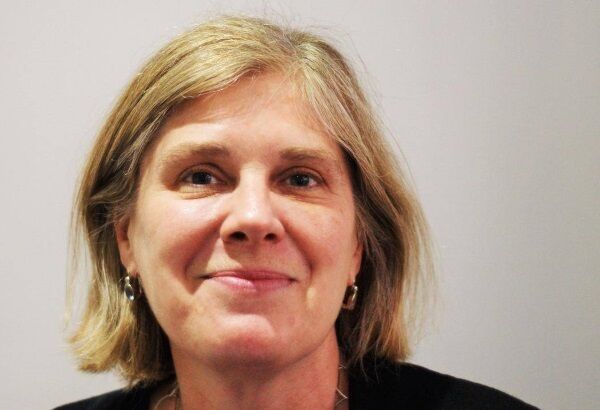
Consultant psychologist, Dr Polly Carmichael who leads the GIDS service at the Tavistock in London and its outreach service in Dublin says the increase in referrals to the Irish clinic “mirrors trends elsewhere”.
Consultant child and adolescent psychiatrist at St Patrick’s Mental Health Services, Dr Aileen Murtagh, seen as one of the foremost experts in GD in this country, says yes there has been an “observed increase” in the numbers presenting to CAMHS with GD but this doesn’t provide the full picture around as “not all transgender people want or need to be linked in with a service,” she says.
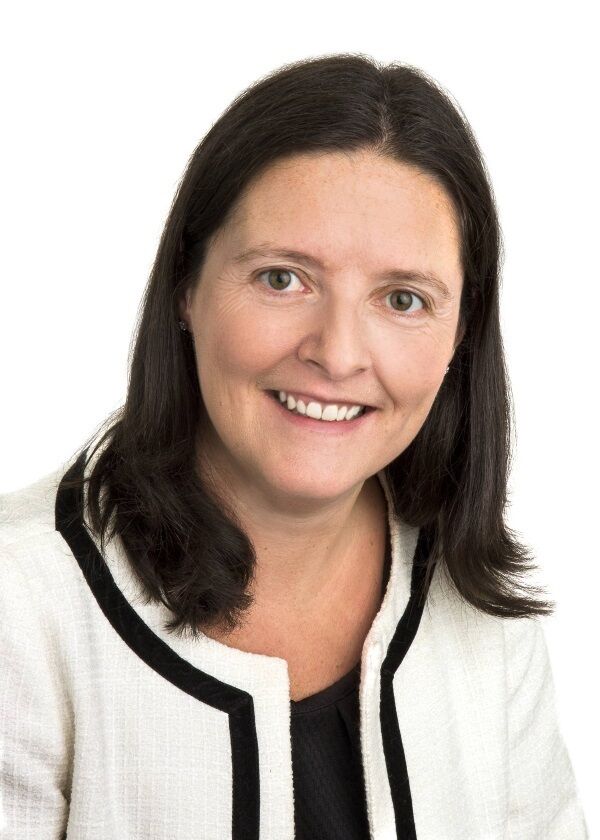
But why are numbers increasing so much?
Dr Polly Carmichael says: “There has been a huge amount of media coverage around transgender and the young people can access information readily on the internet, many are totally informed about healthcare and spend hours at night connecting with people in America.”
Nobody knows what causes GD. Is it biological, psychological? Research is limited and so Tavistock and other similar clinics globally share knowledge.
“This area is changing faster than the evidence base,” Dr Carmichael cautions.
She believes however that the numbers presenting in Ireland are still below international norms.
“When there isn’t an established pathway it is difficult to talk numbers, there is no reason to think that there would be fewer. The concern is that there could be a lot of unmet need among young people in Ireland as there is not really a pathway,” she said.
“It is important to see the young people as individuals and offer them the space to find the right pathway for them. Young people need to know there is help but we have to be careful that in supporting young people with these feelings we don’t assume the outcome. The challenge for us is accepting and acknowledging them but at the same time not supposing there won’t be a change at a later date,” she said.
The vast majority of young people who attend the service in the UK before adolescence eventually change their minds, she says. deciding they are gay or bisexual. But the vast majority who attend services during teenage years do seek sex reassignment.
In Dylan Donohue’s case he has never waivered. He says he is a man in a woman’s body and wants puberty blockers and cross sex hormones as soon as he can.
His mum says nowadays, nobody would ever guess that Dylan Donohue was natal female. Shop assistants, anybody that they strike up random conversation with will refer to ‘your son’ and ‘that young man’.
Dylan used to attend the ‘Belong To’ transgender support group twice every week but now due to limited funding and growing demand, he can only access two meetings every second week.
“Belong To gives young trans people the space to be who they are without being judged. He gets to hang out with kids who know what it feels like. None of us will ever fully understand it, all we can do is be supportive. The best counselling for them is being together, ” she says.
Belong To and the parents’ support group, TransParenCi are “lifesavers” for both transgender kids and their wider families.
Talking to Kirsty you are overcome with her seeming selfless ability to accept her changed circumstances and her son’s changed future.
She’s says it’s been “ a massive adjustment”, a “rollercoaster of emotions for the whole family”.
“But when it’s your child that has something as big as this going on, what else would you do? You love them unconditionally, ” she says.
Kirsty says she has “grieved” in the past year and a half.
“It’s saying goodbye to a future you thought you had. It’s as if my daughter has died but has been replaced by a son of the same age. For the younger two, it’s like they lost a sister but gained a big brother, ” she said.
“There are tough days for us all but we are all very proud of Dylan for being who he was born to be. We also have continued support from our wider family, friends and from TENI and Belong To. The good days outweigh the bad”.
In November, the family attended TransParentCI residential weekend away where trans kids and their families stay in a hotel and attend a variety of supportive workshops and there is art therapy available for all the kids. On the Saturday night, they all danced to wedding band.
“The normalisation is amazing, to see children being children,” said Vanessa of TENI.
A “stunning picture of Dylan when he was younger” hung in the Donohue living room until recently. Kirsty had long loved stealing a glance at that little face. “Dylan never asked me to take it down. He’s too considerate but I knew a time would come when I’d have to,” she said.
When she eventually took the picture off its hook, she felt heartbroken. So too did her younger children.
“It was tough for us all to know that it wasn’t going back up,” she said.
Once Dylan finishes his long-awaited hormone blockers, he wants to begin cross sex hormones at aged 16 so he can transition to a boy physically.
In the meantime however, Dylan can’t travel outside the country as despite his deed poll change, his passport gender marker is natal female and this can only be changed via a gender recognition certificate (GRC) which he can only obtain aged 16.
Even then he will have to go to court to get his GRC.
It’s the same with opening a bank account, he can’t have a Dylan Donohue bank account without the GRC. “We have to hope that when the Gender Recognition Bill is revised next year. The problems bureaucracy causes for transgender children can’t be underestimated,” Kirsty said.
“All he wants to do is present as who he is and when you constantly have to explain, you are constantly outing yourself as your natal sex. You are not being allowed to be yourself”.
Referring to transitioned transgender children in their natally assigned gender or in their natally assigned name causes them enormous upset. Kirsty asked that I didn’t refer to Dylan’s birth name.
This year he does his Junior Cert and his exam number will likely come linked to his birth name. “It’s so hurtful to him, so offensive,” she says.
Dr Aileen Murtagh is hopeful that a service model for transgender children, adolescents and adults will be put in place by the HSE. She says it has been consulting with the professional organisations, clinicians and families.
“Ideally, a national specialist service for young people and adults is required in Ireland, which would also provide consultation and training to local services to up-skill local clinicians in meeting the needs of these young people and their families,” she says.
There are a number of professionals in Ireland from different disciplines who have developed a special interest in this area. The Tavistock has started providing case-led supervision mode,l upskilling to Irish health professionals.
TENI also offers training to CAMHS and primary care health professionals. They were overjoyed when they held a conference last year and 385 health professionals attended.
In the meantime, Kirsty Donohue keeps going in her role as the mother of three sons. Walking her youngest to school recently, they had the following conversation:
- ”Mum do you remember when we called Dylan his old name?”
-“I do”
-“Why did we do that Mammy?”
-“Mammy and Daddy made a mistake when he was born”.
- “Silly Mammy and Daddy”.
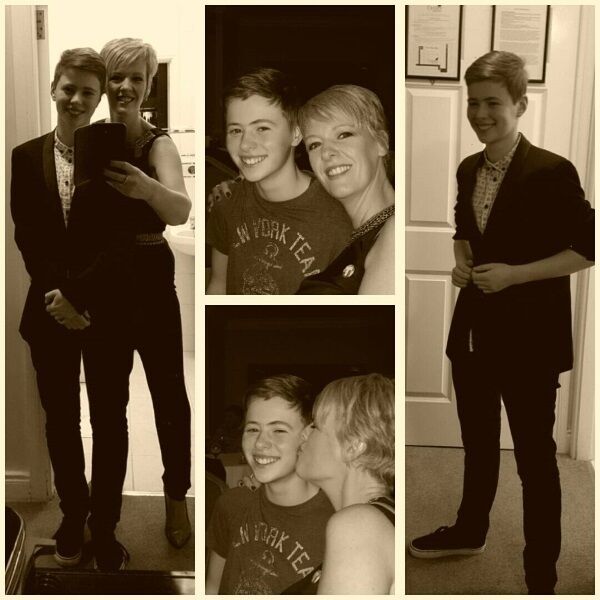
It can be difficult to keep pace with the many and preferred terms in the transgender community but failing to use the appropriate word or pronoun can cause unexpected pain and stress for the trans’ person, says TENI.
- Transgender: Refers to a person whose gender identity and/ or gender expression differs from the sex assigned to them at birth. This term can include diverse gender identities.
- Assigned sex: This is a more respectful way of acknowledging the sex that the person was deemed at birth due to external anatomy. For a trans’ person, assigned sex may vary substantially from gender identity.
- Gender identity: This refers to their deeply-felt identification as male, female or other. It may not correspond to their assigned sex.
- Transition: A process through which some transgender people begin to live as the gender with which they identify, rather than the one assigned at birth.
- Bigender: This can literally be translated as ‘two genders’. These two identities can be identifying as male and female at different times but could also include non-binary identities.
- Cisgender: Non-trans person such as a person whose identity and expression is aligned with the sex assigned at birth.
- Gender fluid: A non-binary gender identity. Gender fluid individuals experience different gender identities at different times.
- Intersex: Refers to individuals who are born with sex characteristics (such as chromosomes, genitals, and/ or hormonal structure) that do not belong strictly to male or female categories, or that belong to both at the same time. Previously described as hermaphrodite, this term is now derogatory.
- Non-binary: An umbrella term for gender identities that fall outside the gender binary of male or female. This includes individuals whose gender identity is neither exclusively male nor female, a combination of male and female or between or beyond genders.
Chest binders are a compression garment designed to flatten out breasts comfortably and safely and are often used by transgender men.
Prior to their design, many transgender men had, and some against advice still
do, used bandages and sometimes tape to flatten their chests and ended up badly bruised, with scar tissue damage or worse, with fractured ribs as they couldn’t breathe properly.
Made from Spandex and nylon generally, the modern binder often looks like a
neoprene vest.
However, there are similar risks with overuse of custom- built binders too.
Trans men who bind their chests excessively can suffer breathing difficulties and faint during sports sessions as their lung capacity is dangerously reduced.
The Q Soc, Trinity College’s LGBT Society, recommends only binding for 8-12 hours and not sleeping in binders.
It says that while custom- made binders are safer, it doesn’t make binding safe and any binding should only be done responsibly.
Only 40% of children who attend the Tavistock clinic with suspected gender dysphoria will eventually have physical interventions.
These can be prescribed at puberty to pause or ‘put a brake on’ the development of secondary sexual characteristics such as breasts, facial hair, periods. It blocks the production of pre-programmed sex hormones. The blockers are reversible.
These can be prescribed from 16 onwards to masculinise or feminise the body at the Tavistock.
The clinic emphasises such steps are taken only after a ‘staged approach’ where there is a comprehensive assessment of the person’s gender development by a multidisciplinary team of professionals.
According to Dr Carmichael, this careful approach “ provides time and space for exploration of feelings and discussion, an opportunity to think about different options, for the young person to develop”.
A set of surgical procedures that alter a person’s physical appearance or the functioning of their existing sexual characteristics.
Other terms include gender confirmation surgery, gender reassignment surgery, sex reassignment surgery. Patient must be aged 18.
Some trans people undergo surgery to align their bodies with their gender identities. Other trans people don’t want surgery for many reasons.







